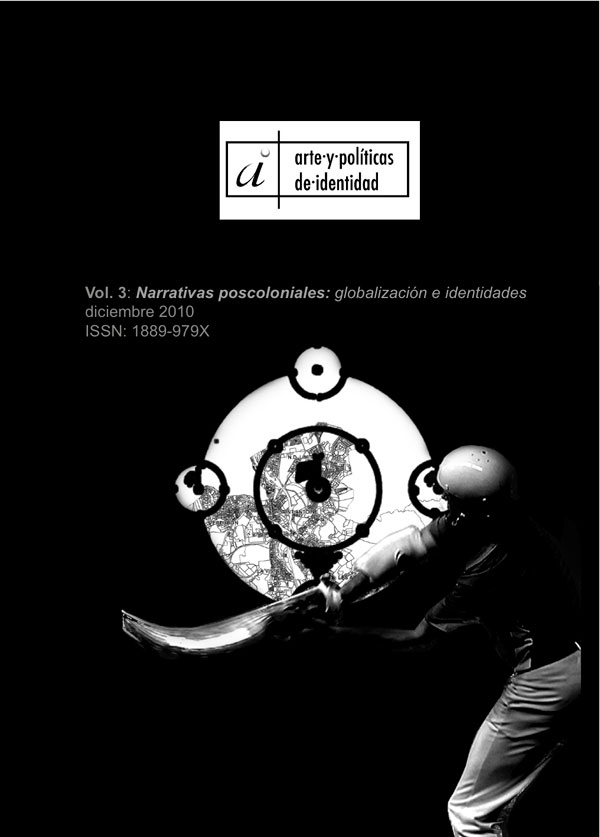From Empowerment. Extreme Pictures against the Globalizing Patriarchal Capitalism: Fight and Resistance versus Mexican Femicide and the Chicano beyond Border
Abstract
The aim of the article is to demonstrate one of the most characteristic and at the same time most overlooked qualities of Francesca Woodman’s photographs – decapitation, or more specifically auto-decapitation of picture’s subject. The act of beheading by the picture frame cannot be interpreted as a technical aspect or as the artist’s lack of control over the shooting process. Neither should it be comprehended as a project of anti-biography. A more convincing interpretation can be founded on the association of Woodman’s work with such surrealist dissidents as Michel Leiris, André Masson, and Georges Bataille. The act of auto-decapitation for Leiris is obligatory in order to address oneself since one is never able to see him- or herself fully. For Bataille decapitation represents the human revolt against one’s form, viewed as an act of liberation. Woodman initiates the inter-textual play with the figure of the Acephalé (headless) known from the surrealists’ writings and art (Masson). She perpetuates the revolutionary message while modifying it by implementing the female body. But the result is opposite to the straightforward critique of women’s decapitation as an act of men’s oppression. Woodman’s Acephala break up with conventional representation and uses of the body – in this way her art becomes familiar with affirmative reflections on the hysterical body by authors including Hélène Cixous and Julia Kristeva.Downloads
-
Abstract419
-
PDF (Español (España))645
References
Anzaldúa, G. (1999). Borderlands / La Frontera. San Francisco: Aunt Lute Books.
Bartra, R. (2007). Territorios del terror y de la otredad. Valencia: Ed. Pre-Textos.
Bolaño, R. (2004). 2666. Barcelona: Círculo de Lectores-Anagrama.Duany, J. Más allá del barrio. La diáspora puertorriqueña hacia la Florida. Recuperado el 12 de mayo de 2008, de http://nuso.org/upload/articulos/3312_1.pdf
Fuentes, C. (2007). La frontera de cristal. México D. F.: Punto de lectura.
Hooks, b. (1990). Yearning. Race, Gender, and Cultural Politics. Boston: South End Press.
Haraway, D. J. (1995). Ciencia, cyborgs y mujeres. Madrid: Ed. Cátedra, Universitat de València, Instituto de la Mujer.
Lagarde y de los Ríos, M. (2003). Los cautiverios de las mujeres: madresposas, monjas, putas, presas y locas. México D. F.: Universidad Nacional Autónoma de México.
Lauretis, T. de (2000). Diferencias. Etapas de un camino a través del feminismo. Madrid: Ed. Horas y Horas.
Lugones, M (1990). Hablando cara a cara/ Speaking Face to Face: An Exploration of Ethnocentric Racism. En Anzaldúa, G. (Ed.), Making Face, Making Soul. Haciendo caras. Creative and Critical Perspectives by Feminists of Color (p. 47). San Francisco: Aunt Lute Books.
Mateos, M. (1997, 15 de junio). Performance de Wolffer: gotas sobre un cuerpo-país. La Jornada, México D. F., 22.
Mayayo, P. (2005). Globalización y género: artistas en la frontera. Artecontexto, nº 8,Madrid, ARTEHOY, 36-39.
Monsiváis, C. (Noviembre 2002/ febrero 2003). El femicidio y la conversión de Ciudad Juárez en el territorio de la impunidad. Metapolítica, Nº 26/17, 14-25.
Nathan, D. (2005). Trabajo, sexo y peligro en Ciudad Juárez. En B. Sichel y V. Villaplana, (Eds.), Cárcel de amor. Relatos culturales sobre la violencia de género (pp.292-305). Madrid: Museo Nacional Centro de Arte Reina Sofía.
Paz, O. (2008). El laberinto de la soledad. Madrid: Ed. Cátedra.Preciado, B. Multitudes queer. Notas para una política de los . Recuperado el 26 de febrero de 2009 de http://hartza.com/anormales.htm
Segato, R. L. (2004). Territorio, soberanía y crímenes de segundo estado: la escritura en el cuerpo de las mujeres asesinadas en Ciudad Juárez, Serie Antropológica, Nº 362, Brasilia, p. 9. Recuperado el 21 de octubre de 2008, de http://unb.br/ics/dan/Serie362empdf.pdf
Spivak, Ch. G. (1999). A Critique of Postcolonial Reason. Toward a History of the Vanishing Present. Cambridge (Massachusetts)–Londres (Inglaterra): Harvard University Press.
Subirats, E. (2001). Coco Fusco entrevista. Debats, nº 74, Valencia, Institució Alfons el Magnànim, 104-106.
Verza, M. (2009, 21 de noviembre). Condena histórica en México por los feminicidios en Ciudad Juárez, La Gaceta, Madrid, 45.
Volkart, I. Tecnologías de la identidad. Recuperado el 15 de julio de 2009 de http:// http://aultraperiferiadigital.com/textosdigitales/historicos/ivonnevolkart.pdf
Works published in this journal are subject to the following terms:
- The Service of Publications from the University of Murcia (publishing house) keeps the published works’ copyrights, and favors and allows the reuse of these works under the license indicated in point 2.
- Works are published in the journal’s online edition under the license Creative Commons Reconocimiento-NoComercial-SinObraDerivada 3.0 España(texto legal). They can be copied, used, disseminated, transmitted and publicly exhibited, as long as: i) the author and original source of publication are cited (journal, publishing house and work’s URL); ii) they are not used for commercial purposes; iii) the existence and specifications of this license are mentioned.
3. Conditions for auto-file. It is allowed and encouraged that authors share electronically their pre-print version (the pre-reviewed version) and /or post-print version (the reviewed and accepted version) of their Works before the publication, since it promotes its circulation and dissemination. RoMEO color: green.










